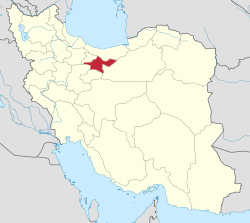| Qoba Mosque | |
|---|---|
مسجد قبا | |
 | |
| Religion | |
| Affiliation | Shia Islam |
| Location | |
| Location | Tehran, Iran |
 | |
| Geographic coordinates | 35°45′38.03″N51°26′58.47″E / 35.7605639°N 51.4495750°E |
| Architecture | |
| Type | Mosque |
The Qoba Mosque (known also as Ghoba Mosque) is a Mosque in Tehran, with a view of the Alborz Mountains to the north. It is located on Ghoba (Qoba) Street between Negin Street and Khushak Street.[ citation needed ]
The mosque was closed by the Shah in 1975 because of Mohammad Mofatteh's political teachings.[ citation needed ]
During the Iranian Revolution, the mosque was a site of revolutionary gatherings. [1]
Responding to Mir Hossein Mousavi's appeal, Iranian government legally approved a Sunday June 28, 2009, (or Tir 7th 1388 Anno Persico) peaceful prayer gathering at 6pm mourning those killed during the 2009 post-election clashes at the Qoba Mosque (or Ghoba Mosque) on Ghoba Alley (North of Hosseinie Ershad Mosque on Doktor Ali-ye Shariati) in Tehran.[ citation needed ]
